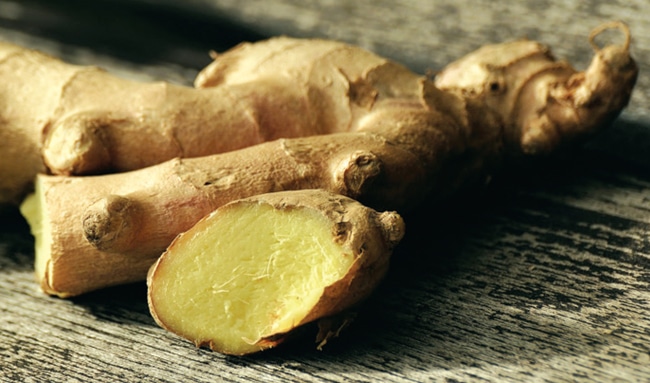2019 Flavor & Ingredient Trends
Making predictions about the future of the beverage industry is a dangerous game. Trust us on this one; we do it every year for our January/February issue, and we’re about to put ourselves on the line again right now. As they have been for years, beverage consumers appear to be getting more careful and conscious about what they drink and why they are drinking it, which is bad news for some ingredients (see: sugar) and encouraging for others, particularly of the natural variety. For CBD, one of the most buzzed about ingredients of the past 12 months, it means the stage is set for it to develop into a major beverage category in the years ahead. For dairy milk, however, it might mean more steady declines as customers seek plant-based alternatives, and within that market, more sustainable products. Flavor preferences are changing too, with exotic citrus and bitters rising in popularity.
BevNET reached out to a group of suppliers, brands and industry experts to get their insights as to where the market for ingredients and flavors in beverage will be going in 2019.
Natural Functionality
In today’s beverage market, consumers are looking at ingredients lists and increasingly asking themselves the same question: what have you done for me lately?
To be fair, people have looked to “functional” ingredients in beverages since man first discovered how to brew roasted coffee beans. But beyond basic energy, a new wave of ingredients promising a range of different, specific health and wellness benefits – from better sleep and relaxation to mental acuity and beauty – will likely play a leading role in the development of the greater functional beverage category over the next 12 months.
Of those ingredients, none has captured the industry’s imagination like cannabidiol (CBD), the hemp-derived compound that was legalized on a federal level in December 2018. The non-psychoactive ingredient is now being positioned as the all-purpose functional ingredient of the future, with cannabis market analysts at The Brightfield Group projecting the U.S. CBD market to reach $591 million this year and $22 billion by 2022. That same year, the market for CBD-infused beverages alone will reach $260 million, according to Canaccord Genuity.
Holly McHugh, marketing associate at beverage incubator Imbibe, noted that CBD’s appeal benefits from its position at the intersection of two distinct rising trends: the movement towards natural health-based ingredients and changing public perceptions about cannabis. CBD’s broad range of suggested applications – including treating pain, nausea, anxiety, inflammation, insomnia and general stress relief – allow it to play in multiple categories simultaneously, and aligns CBD beverages with consumer interest in health and wellness products, according to Tom Gibson, director and flavor architect at Flavorman.
While CBD promises a range of benefits, there is still room for functional ingredients aimed at serving a single purpose for consumers. In its 2019 Trend Predictions report, market research group SPINS cited sleep as a growing trend in beverage, with new product launches from Stay Cool and SOM Sleep reflecting category innovation based around natural ingredients like L-theanine, GABA and kava. Along those same lines, expect brands to further explore relaxation and anti-anxiety drinks based around herbs like lion’s mane, holy basil and ashwagandha as an elixir for overstressed millennials.
As kombucha continues to go mainstream, drinks with herbs and botanicals that support gut health and digestion are likely to follow in greater numbers; according to the Specialty Food Association (SFA)’s 2019 Trendspotter Panel, chaga mushroom (linked to lowering cholesterol) and cordyceps (diabetes and heart health) will be two ingredients to watch. The growing demand for better-for-you functionality is driving interest in these ingredients, and consumers’ willingness to give even the more exotic ones a chance is an encouraging sign of the market’s potential.
“Ingredients like apple cider vinegar, turmeric, molasses and probiotics will continue to make their way into the beverage category and create opportunities for innovative ready-to-drink beverage concepts that deliver more than just flavor,” said Devin Fochler, senior beverage technologist at Synergy Flavors.
Florals, Spices and Botanicals
Building on the momentum they have generated for the last several years, spices and floral and botanical ingredients are expected to go from strength to strength in 2019.
Prized for their versatility in both flavor and function, many of these ingredients – like lavender, ginger, turmeric, and cinnamon – are already well-known in beverage. Ginger in particular has continued to be one of the strongest performers in this segment, buoyed by traction with ginger beer mixers as well as health-focused RTD products like ginger shots. The root was notably the only non-fruit ingredient to be listed as a “Key” ingredient in Kerry Flavors’ 2019 Taste Charts for water and cold beverages.
“There is greater acceptance for floral and herbal profiles in new beverage applications,” said Witt, citing elderflower, rosemary, basil, rose and sumac as examples. “This aligns well into the functional space where a lot of these herbs have therapeutic qualities that interest an increasing health conscious consumer base who want more than just a beverage.”
Looking ahead, expect consumers to broaden their collective palette as they become more familiar with ethnic flavors and ingredients. Spicy flavors from Latin America and Asia – such as Chinese Five Spice, habanero, cayenne and cardamom – will become popular additions to more indulgent drinks, according to McHugh. And as beverage makers seek any and all ways to reduce sugar content, herbal ingredients provide a platform for creating flavor combinations that add sweetness and complexity in the absence of sugar.
Sustainable Plant-Based Ingredients
The rapid growth of the plant-based milk alternative market – often at the expense of traditional dairy – has been one of the major ingredient stories of the last half-decade; according to Packaged Facts, non-dairy milk will represent 40 percent of the dairy and non-dairy alternative category by 2021.
Fueled by its popularity with baristas as a tool for creating non-dairy coffee drinks, oat milk has emerged as one of the stars of the plant-based milk category. Swedish brand Oatly has helped open the U.S. market, while brands like Califia Farms, Quaker, Mooala and Elmhurst have all launched oat milk products in the past year. Ingredient producer Kerry Flavors ranked oat milk near the top of its list of ingredients used as healthy alternatives in its 2019 Taste Charts.
“We see a strong disruptor in oat milk in this category, given its appeal to millennial consumer in coffee as well as its overall nutrition and taste acceptance globally,” said Shiran Witt, director of marketing at Blue Pacific Flavors, in an email to BevNET. “Oat has a sustainable energy as well as a better environmental narrative than almond milk and can offer the nutritional benefits of whole grains, beta glucan and fiber.”
Beyond flavor or dietary needs, analysts believe a strong sustainability story is one of the reasons why plant-based beverages are resonating with consumers, with oat milk being just one example. According to the SFA Trendspotter Panel, “The [plant-based] movement will become situated in the larger context of sustainability: intertwined with upcycled products, as more companies turn to root-to-stem ingredients to combat food waste.”
Devin Fochler of Synergy Flavors noted that the importance young consumers place on sourcing and transparency will make sustainability a strong consideration when brands consider new beverage innovations, while CCNA’s Susan Zaripheh told BevNET she anticipates an increased focus on using “imperfect” fruits and vegetables or other “waste” products in plant-based beverages. To that end, Blue Pacific Flavors is developing a sustainable food waste initiative through its Farm-to-Flavor platform that uses fruits that are traditionally not used for making juice.
Bitters and Cocktail Inspired Flavors
As consumers seek out new flavor innovations in non-alcoholic drinks, industry analysts are predicting that many of those will be taking their cues from the world of cocktails and mixology.
Over the last several years, bitter herbal flavors have taken a more prominent role in non-alcoholic beverage formulations, and several analysts told BevNET they expect the trend to continue in 2019. Tom Gibson, flavor director at Flavorman, noted that the focus on bitters is a natural outcome of the rising trend of botanicals, and that the growth of the shrub and “authentic tonic” categories is evidence of bitters finding a place outside of alcoholic drinks.
“Many people today are looking for adult beverages that don’t contain alcohol, so we’ll see non-alcoholic beverages taking flavor inspiration from the mixology world,” said Susan Zaripheh, group director of transformational innovation at Coca-Cola North America. The soda giant recently began testing Bar None, a cocktail-inspired non-alcoholic drink, in select liquor stores, bottle shops, restaurants and specialty markets in the Atlanta area and online. Flavors include Sparkling Sangria, Spiced Ginger Mule, Dry Aged Cider and Bellini Spritz.
Exotic Citrus
Lemon, lime, orange and grapefruit are perennially popular citrus flavors in beverage. Yet as consumers for options beyond those staple choices, analysts told BevNET they expect drink makers to meet that demand by embracing exotic fruits from around the world, including yuzu, dragon fruit, açaí, dalandan, jackfruit and Madagascar lime.
“As cultural influences and interest in diverse flavors increase, we will begin to see these exotic flavors travel to new product categories, such as spiked and sparkling beverages, and paired with familiar fruits,” said Devin Fochler, senior beverage technologist at Synergy Flavors.
The versatility of these flavors leaves room for beverage makers to innovate within them. Al Murphy, vice president of Mother Murphy’s Flavors, told BevNET his company is building flavors around less familiar varietals like Cara cara navel oranges and dekopen, better known as Sumo Citrus.
Along with citrus, other notable exotic fruit flavors of the moment include passionfruit, pomegranate and black currant, according to Greg May, business development manager at Welch’s Global Ingredients Group.


Receive your free magazine!
Join thousands of other food and beverage professionals who utilize BevNET Magazine to stay up-to-date on current trends and news within the food and beverage world.
Receive your free copy of the magazine 6x per year in digital or print and utilize insights on consumer behavior, brand growth, category volume, and trend forecasting.
Subscribe




